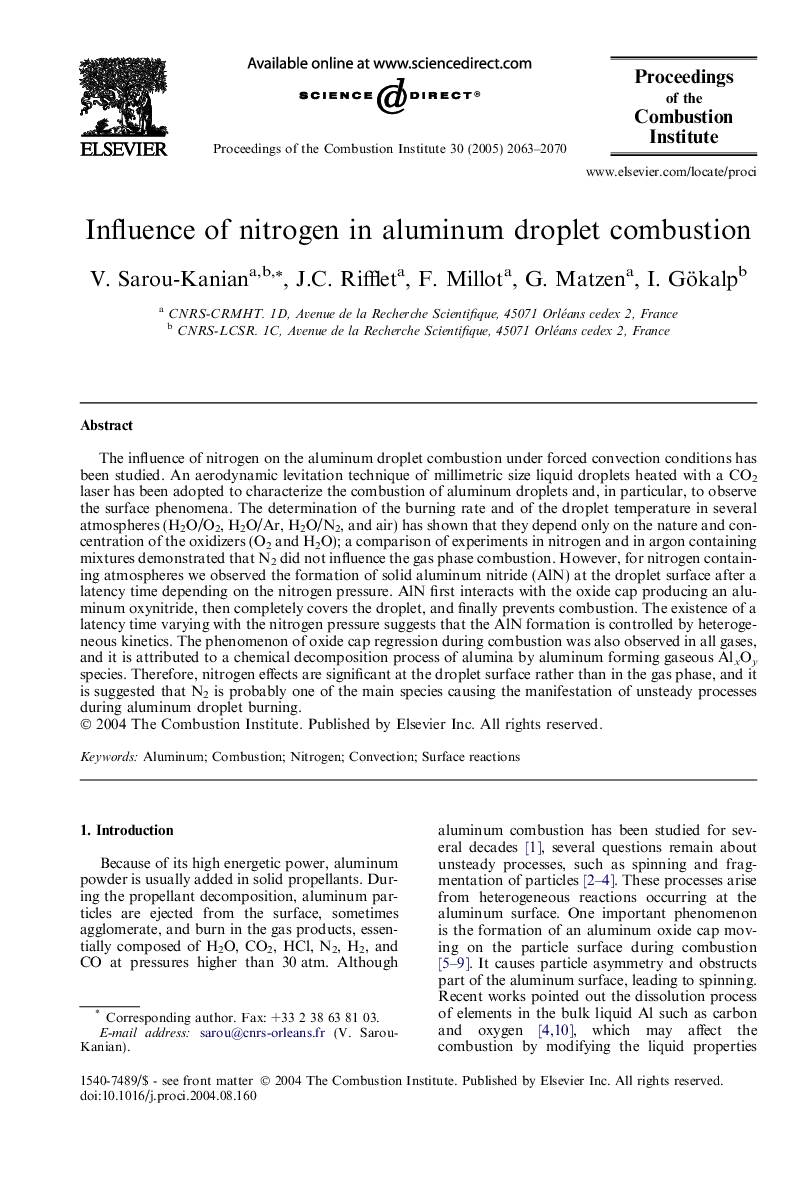| Article ID | Journal | Published Year | Pages | File Type |
|---|---|---|---|---|
| 240949 | Proceedings of the Combustion Institute | 2005 | 8 Pages |
The influence of nitrogen on the aluminum droplet combustion under forced convection conditions has been studied. An aerodynamic levitation technique of millimetric size liquid droplets heated with a CO2 laser has been adopted to characterize the combustion of aluminum droplets and, in particular, to observe the surface phenomena. The determination of the burning rate and of the droplet temperature in several atmospheres (H2O/O2, H2O/Ar, H2O/N2, and air) has shown that they depend only on the nature and concentration of the oxidizers (O2 and H2O); a comparison of experiments in nitrogen and in argon containing mixtures demonstrated that N2 did not influence the gas phase combustion. However, for nitrogen containing atmospheres we observed the formation of solid aluminum nitride (AlN) at the droplet surface after a latency time depending on the nitrogen pressure. AlN first interacts with the oxide cap producing an aluminum oxynitride, then completely covers the droplet, and finally prevents combustion. The existence of a latency time varying with the nitrogen pressure suggests that the AlN formation is controlled by heterogeneous kinetics. The phenomenon of oxide cap regression during combustion was also observed in all gases, and it is attributed to a chemical decomposition process of alumina by aluminum forming gaseous AlxOy species. Therefore, nitrogen effects are significant at the droplet surface rather than in the gas phase, and it is suggested that N2 is probably one of the main species causing the manifestation of unsteady processes during aluminum droplet burning.
